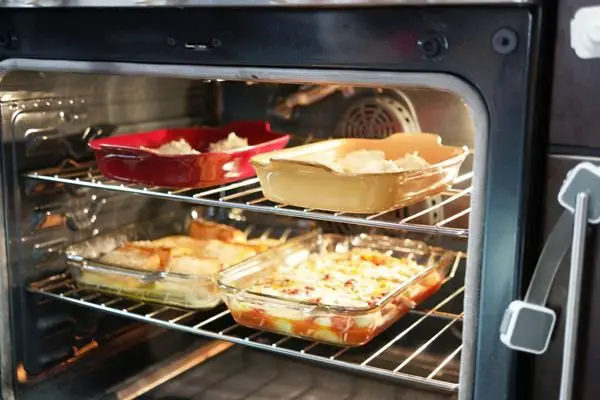Baking a cake is a delicate process that requires precision and patience. With the advent of modern appliances, one question that often arises is whether a convection oven can be used for baking cakes.
In this article, we will explore the pros and cons of using a convection oven for baking cakes and give you some helpful tips and tricks to ensure your cake turns out perfectly every time.

Introduction to Convection Ovens
A convection oven, also known as a fan-assisted oven, circulates hot air around the food to ensure even cooking.
This is different from a conventional oven which relies on the transfer of heat from the heating element to the food.
Convection ovens are often more energy-efficient and can cook food faster, making them a popular choice for home cooks and professional bakers alike.
Can You Bake a Cake in a Convection Oven?
The answer is yes, you can bake a cake in a convection oven. However, there are some important differences to be aware of when using a convection oven for baking cakes.
Benefits of Baking a Cake in a Convection Oven
- Faster cooking time: Convection ovens can cook food faster than conventional ovens, so your cake will be ready in less time.
- More even baking: The circulation of hot air in a convection oven ensures that the cake bakes evenly, resulting in a perfectly baked cake with no dry spots or undercooked areas.
- Better crust formation: The hot air circulation can help form a crisp, golden crust on your cake.
Drawbacks of Baking a Cake in a Convection Oven
- Different baking temperatures: Convection ovens typically cook at a lower temperature than conventional ovens, so you may need to adjust the baking temperature accordingly.
- Shorter baking time: Because convection ovens cook faster, you may need to keep a close eye on your cake to ensure it doesn’t overbake.
- Higher risk of overbrowning: The hot air circulation can also result in overbrowning, so it’s important to adjust the baking time accordingly.
Tips and Tricks for Baking a Cake in a Convection Oven
- Reduce the temperature: Reduce the temperature by 25°F when baking a cake in a convection oven.
- Check the cake frequently: Convection ovens cook faster, so keep a close eye on your cake and check it frequently to ensure it doesn’t overbake.
- Cover the cake with foil: To prevent overbrowning, you can cover the cake with foil for the last 10-15 minutes of baking.
- Use the right pan size: Make sure to use the correct pan size for your cake. A cake that is too small for the pan may overcook, while a cake that is too large for the pan may not cook evenly.
How Does a Convection Oven Work?
A convection oven has a fan that circulates hot air around the food. This helps to cook the food evenly and reduces the amount of time it takes to cook.
The fan also helps to remove moisture from the food, which can help to keep it crispy and prevent it from becoming soggy.
Conclusion
Baking a cake in a convection oven can be a great way to save time and achieve more even results.
However, it’s important to keep in mind the disadvantages, such as the risk of the cake drying out or becoming overcooked on the outside and undercooked on the inside.
By following the tips outlined in this article, you can help to minimize these risks and achieve the best results when baking a cake in a convection oven.
